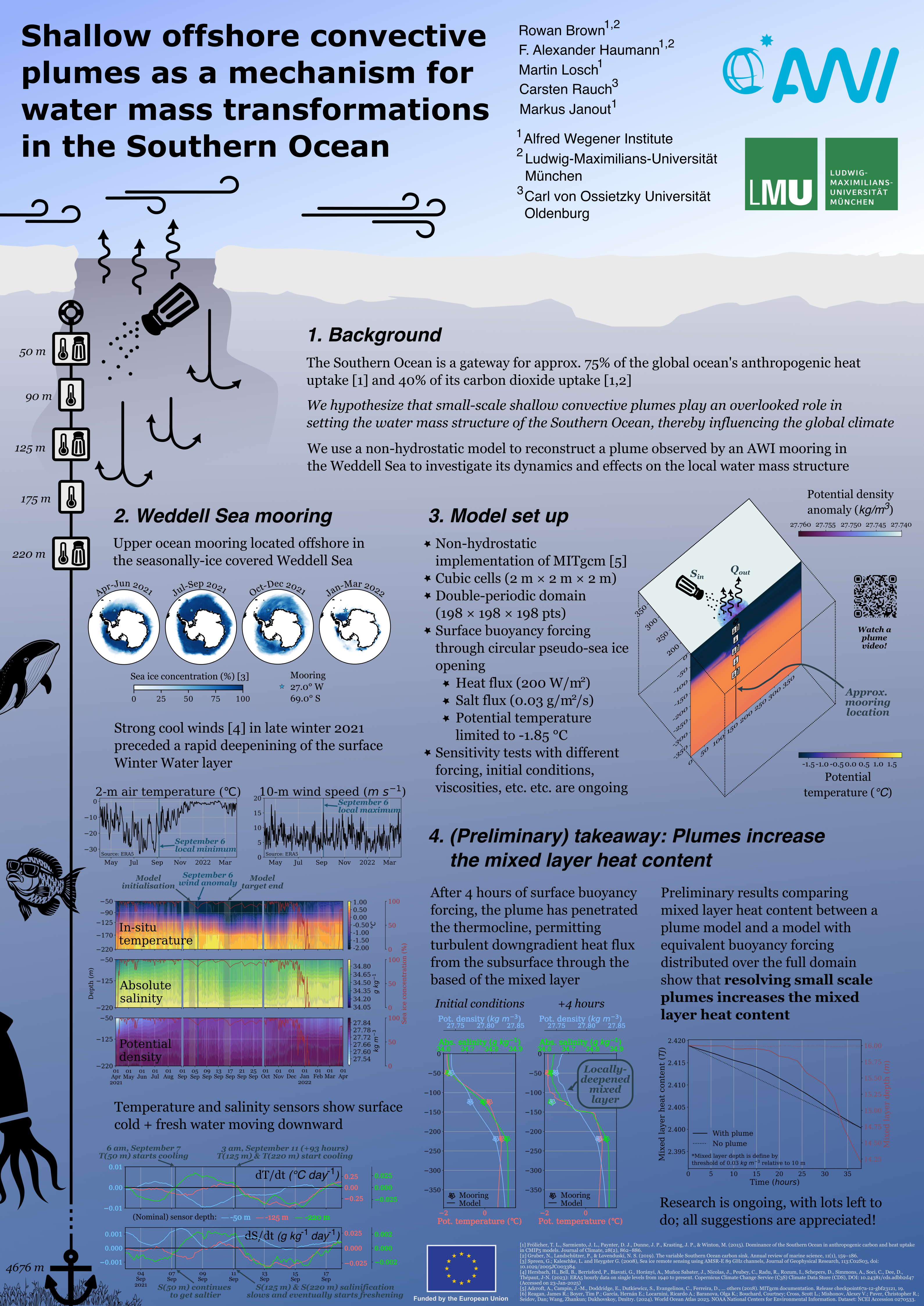CELLO poster
My newest plume video:
This model setup uses the MITgcm tutorial_deep_convection test case with the following modifications:
- Resolution: $2$ m $\times$ $2$ m $\times$ $2$ m
- Domain: $198$ $\times$ $198$ $\times$ $198$ grid cells
- Initialisation: Temperature and salt profile from mooring time series (two-day mean around September 4, 2021) with a normalised WOA September climatology used to fill at each depth level (temperature is prevented from freezing and static instabilities are homogenised to ensure $N^2 ≥ 0$). This results in a staircase and other sharp points in the potential density profile which are smoothed out using a short integration with very high diffusivities.
- Initial velocities are $0$ m s$^{-1}$ in all directions
- Timestep: $2$ s
- Equation of state: TEOS-10
- Coriolis: $f_0=-1.358 \times 10^{-4}$, $\beta=8.194 \times 10^{-12}$
- Boundary conditions:
no_slip_bottomandno_slip_sidesare both.FALSE., with no tracer relaxation sponges - Surface forcing: Constant salt flux of $0.03$ g m$^{-2}$ s$^{-1}$ and heat flux of -$200$ W m$^{-2}$
- Surface temperature limitation (i.e.,
allowFreezing=.TRUE.):Tfreezing=-1.85(i.e., a wee bit of supercooling) - Non-hydrostatic solver:
cg3dMaxIters=40 - Advection scheme:
tempAdvSchemeandsaltAdvSchemeare both $33$ (and diffusivities are all $0$) - Viscosity: therein lies the question… for this run,
viscC2Smag=3.1andviscAz=1.E-4, but this may need to change in future iterations
There are still lots of improvements to be made, but this is my current best effort!

